#person: Deanna Durbin
Text

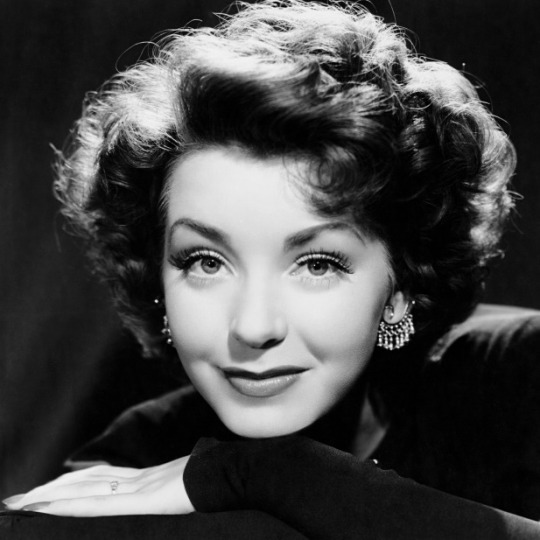
Propaganda
Jean Harlow (Red-Headed Woman, Dinner at Eight, Libeled Lady)— The original blonde bombshell. There would be no Marilyn Monroe or other funny blonde starlet without her! She was still an up and comer when cast in Platinum Blonde and at the time the film was either gonna be called The Gilded Cage or Gallagher (after the other female lead in the film) but after casting Harlow her role was expanded and the film titled after her. That's starpower!!!
Marsha Hunt (The Human Comedy, College Holiday, These Glamour Girls)—To be honest, I haven't had the chance to see a lot of her films, but she was an amazing person. A beautiful, popular actress during the 30s and 40s, Marsha was unfairly blacklisted during the Red Scare for speaking out against McCarthyism. Instead of letting that stop her, she focused her efforts on humanitarian work for causes such as world hunger, poverty, and pollution. She was also a support of same-sex marriage. Side note to any fellow fashion history nerds, she wrote a book on 30s-40s fashion. She stayed true to her beliefs through the years, and passed away at the age of 104 in 2022.
This is round 1 of the tournament. All other polls in this bracket can be found here. Please reblog with further support of your beloved hot sexy vintage woman.
[additional propaganda submitted under the cut.]
Marsha Hunt:
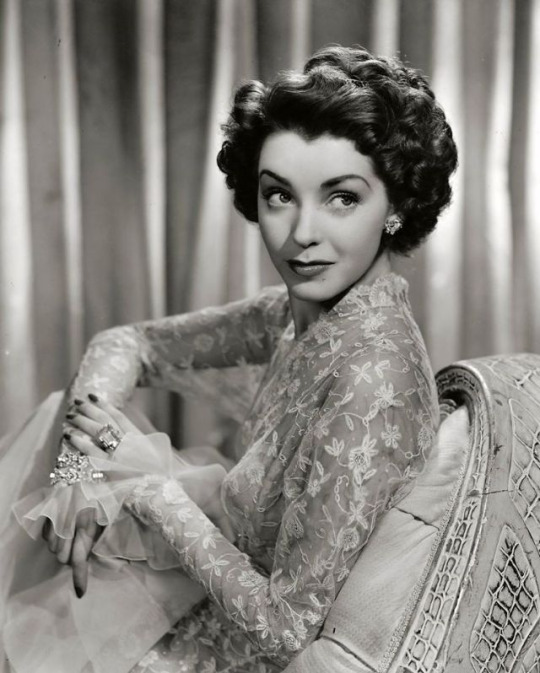
Marsha Hunt first signed with Paramount in 1935 at the age of seventeen, kicking off a prolific career as a beloved Hollywood star and fashion model. Her distinctive profile and facial structure earned her the nickname “Curly Lips”: “Besides a rounded forehead, almost no nose bridge, and a nose that curved upwards, even my lips curled up at the corners. Ronald Coleman and his wife Benita told me they used to describe me to each other as ‘Curly Lips.’ I decided that anything that helped two people I adored take notice of me would no longer keep me awake at nights.” (The Way We Wore, p.95) Marsha appeared in about seventy films over almost eighty years, including Hollywood Boulevard, College Holiday, Easy Living, These Glamour Girls, Irene, Pride and Prejudice, Blossoms in the Dust, Thousands Cheer, The Human Comedy, and many more. She was blacklisted during the McCarthy era for publicly defending Hollywood from the accusations of the House Committee on Un-American Activities, alongside Lucille Ball, Humphrey Bogart, Deanna Durbin, Henry Fonda, Judy Garland, Frank Sinatra, and many other members of the Hollywood community.
Jean Harlow:

what is there to say just look at her. the blondest woman to ever live. a sort of prototypal marilyn monroe. has a cocktail named after her so you know she was really that beautiful. dated longie zwillman. godmother to bugsy siegel's daughter. if we really want to bring back being a mob wife we have to start here.........
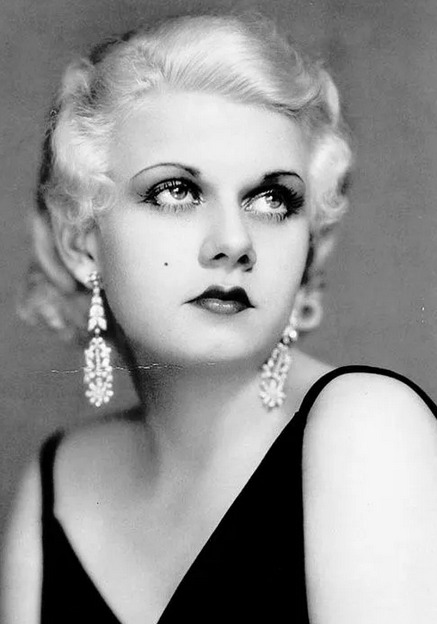

She was the OG Blonde Bombshell. People don't give her credit, but she was actually a sweetheart and had a great flair for comedy. And she worked those pencil thin brows! And even though she's known for the Blonde, she is deliciously evil in Red-Headed Woman, I highly recommend!

259 notes
·
View notes
Photo
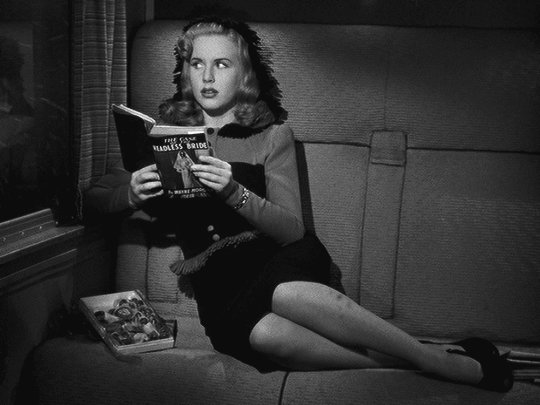
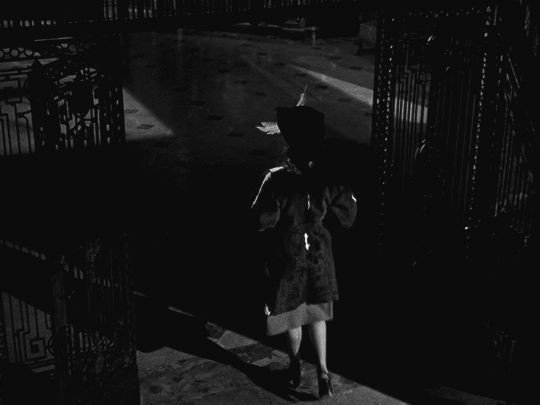
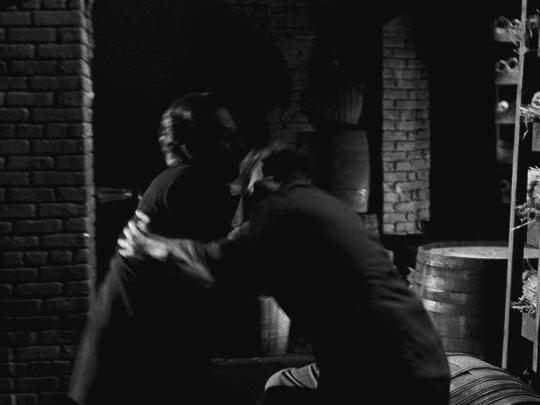

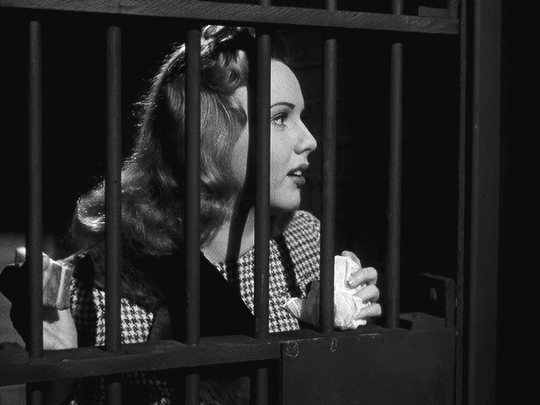
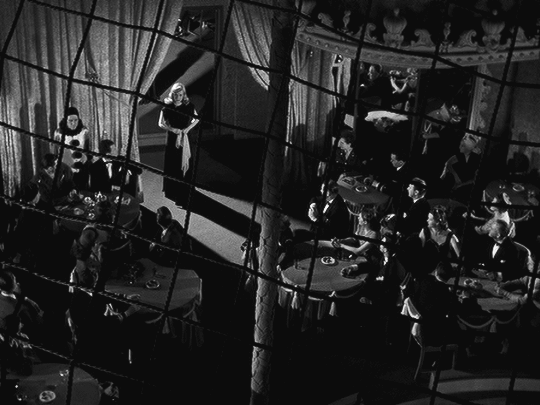
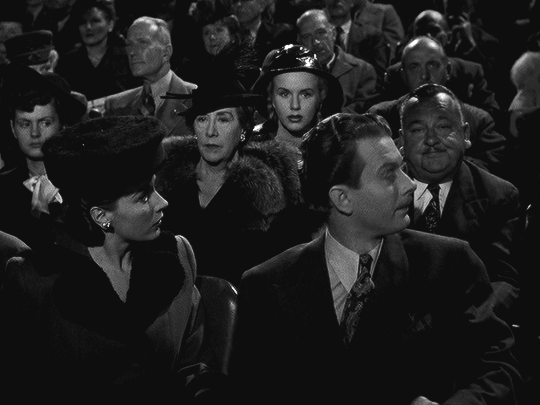
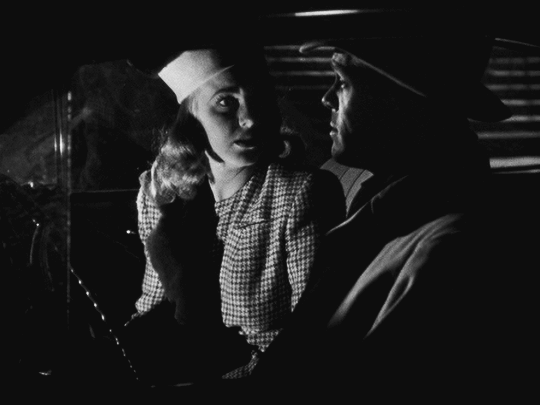
"You better have another chapter, Mr. Morgan. I don't like sad endings."
LADY ON A TRAIN (1945) dir. Charles David
#oldhollywoodedit#classicfilmedit#Deanna Durbin#David Bruce#Dan Duryea#Lady on a Train#category: Lady on a Train#person: Deanna Durbin#person: David Bruce#*mygifs#*loatedit
497 notes
·
View notes
Text
Actress Spotlight: Susanna Foster in “Phantom Of The Opera”


Back when I was a junior horror fanatic, one of the first films I saw of the genre was the horror extravaganza from classic Universal, Phantom of the Opera. I must’ve been all of seven or eight years old and I was hooked! It was a gorgeously done early version of the classic Gaston Leroux story (later made infamous by Andrew Lloyd Webber's 1985 musical) about a man in a mask, a beautiful opera singer, and the phenomenal lengths he would go to make her a star of the Paris Opera House.
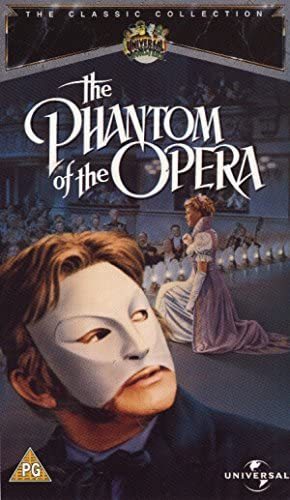
The original early ‘90s VHS cover art I know and love
The 1940′s was a golden era for Universal. They were known for their all-star horror movies, something that got started back in the early 1930′s with legends such as Bela Lugosi as Dracula and Boris Karloff as Frankenstein. Horror was a movie genre in the process of being refined and perfected. The stars who populated these movies were experts at combining the danger with the humanity, such as Karloff, Claude Rains (starring here as the Phantom), Lon Chaney, Jr. It was a bit of controlled "danger" with the lurking cinematic monsters in the shadows, whether it be a man stitched together with disparate body parts, a musician driven mad and into the sewers, or an English aristocrat transforming into a wolf at the full moon and snarling for prey in the fog. Universal's horror was expertly done movie magic and a unique form of escape catering to the darker edges of imagination, propelled by the industry's fantastic talents.
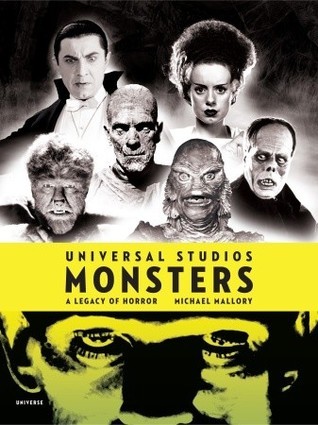
Book Info here
But with many horror movie villains or antagonists, you needed a starlet opposite him! The ones who are truly remembered as formidable talents of their own are women who gave unforgettable performances in film history, greatly respected by the fans many years later. One of my personal favorites of these actresses was the talented Susanna Foster.
Born Suzanne Larson, Susanna Foster came about in a unique period in Hollywood history where young women who were double talents (actresses and singers), were being especially pursued for their skills and transformed into stars by the old studio system. Her rivals at the time were girls like Judy Garland and Deanna Durbin, entertainers who were blazing a path for themselves in a variety of popular musicals and comedies and for rare stars like Garland, a legendary career that encompassed everything from drama to live concerts.
Susanna Foster was one of those singer/actresses and began appearing in movies as early as fourteen years old, such as 1939's The Great Victor Herbert.
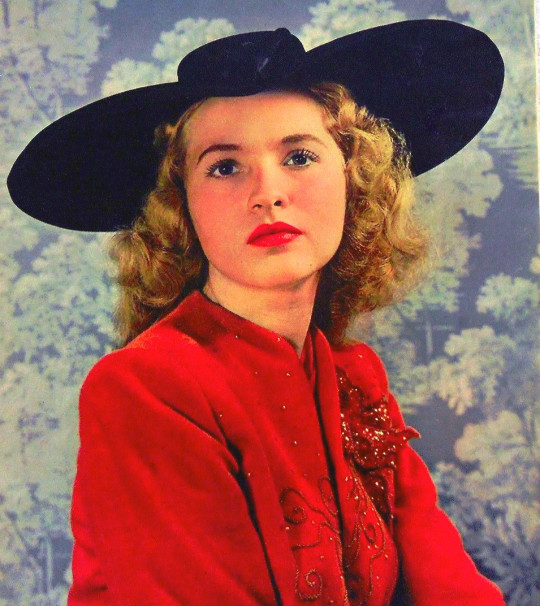

When she was only nineteen years old, she did the film that she is most well known for, the character of 'Christine DuBois', the young opera singer whom the Phantom is determined to make famous at ANY cost, in the haunting and exciting 1943 epic Phantom of the Opera.
You can tell when you watch the first few minutes of Phantom that a lot of talent and attention to detail was put into this production. Claude Rains as the 'Phantom' gives intriguing dimension to the role, infusing a great deal of humanity and heart to a character who could’ve easily been turned into a cheap villain. As Erique Claudin, the violinist who becomes disfigured through his own violence and frustration, he becomes a man who latches on to the one person who makes him feel that his existence still has meaning even though he has sunk to the lowest (literally AND figuratively) part of his life. Susanna Foster plays the woman Christine whom Erique falls into a deep obsession with, a very talented opera singer whose skill he is fanatically determined to foster and push to center stage.


Christine is a rising soprano who's caught in mysterious circumstances between a man (Rains) whose madness has caused him to fixate on her because of what he feels is her greatness. Susanna gives vulnerability yet kindness and strength to her depiction of a woman who finds herself caught in the Phantom's path of increasing mania. She is graceful and sophisticated but at the same time, brings a genuine feeling of warmth and compassion to the role, grounding the more colorful, melodramatic qualities of the film, making the production a true delight to watch! She skillfully balances the personality elements in the role, really understanding who Christine is, the kind of lady the Phantom has dedicated himself to, albeit he has done so in an unhinged way. Christine is a refined performer but still a humble lady, grabbing the audience's empathy and identification with her right away.
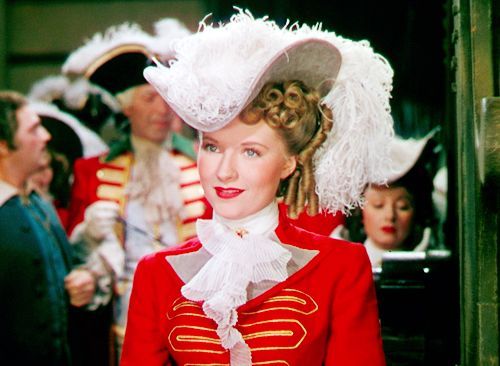

There've been a great many adaptations of Leroux's story throughout the years, of course, the most famous being the Andrew Lloyd Webber musical. The feeling and personality of the characters have been interpreted in different ways but it’s not at all difficult for me as both a classic film fan and a Phantom fan, to choose which one most speaks to me, has encompassed everything of what I feel is the heart and soul and inherent sadness of the tale. This one wins out.

Also, the aesthetic of the film itself is stunning! The sets and costumes (the former designed by Vera West) are nothing less than what I'd describe as utterly lavish; sumptuous, eye-popping, but also dark and elaborate creations that leap off of the screen, emphasizing the larger than life quality of the entire production from the beaded gowns of the Paris Opera House to the desolate sewers of Erique Claudin's lair. The film is steeped in Victorian gothic atmosphere which transports the viewer to a long ago time and place, a brilliant piece of retro movie magic!



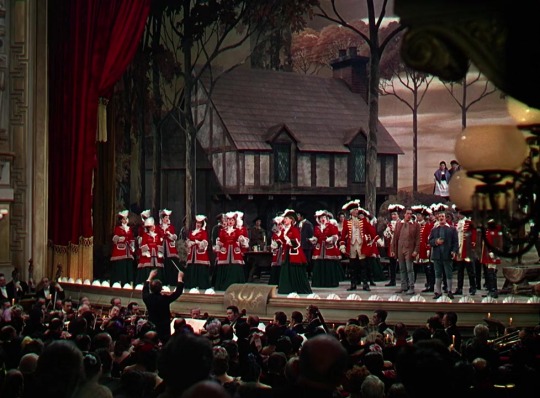
I often feel that while a story or adaptation itself can be timeless, the style in which it's taken from the words on paper to its full visual height onscreen is of the utmost importance. Universal in the 1940's was investing a lot into its horror and really taking the genre to new artistic heights. The colors were never brighter and there was, in my opinion, never so much passion and spirit poured into the telling of this tale than with this *somewhat* underrated version. Everything was of the highest quality--there would never be another Susanna Foster, Claude Rains, Nelson Eddy (as the romantic male lead Anatole Garron, who is in love with Christine) or Arthur Lubin (the director of Phantom). The music itself, composed by Edward Ward, was another star of the movie, every bit as important as the action onscreen, performances and costumes. It breathed a new life into this gothic tale.

Lullaby Of The Bells--listen here!
Foster herself gave a freshness and added dimension to the character of Christine. Looking back on the film, I also noticed something I really enjoyed about her interpretation; how natural and flowing her performance is in what could be considered quite a difficult part. Her Christine is strong without being strident. She is a capable and intelligent woman, self-possessed but down to earth. She doesn't fall into the hysterical or histrionic cliche' but keeps the character at a steady and even keel, even while encountering the shadowy enigma of the man who has invaded and is attempting to control her life and ambition, albeit for his own positive but misguided reasons.
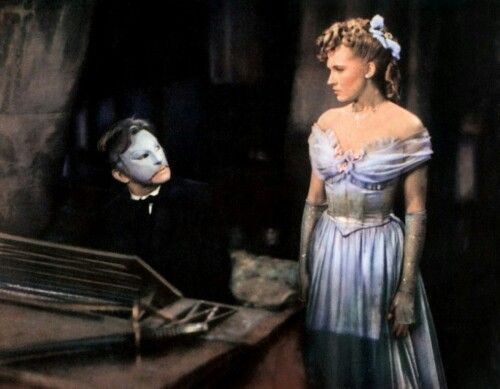
I cannot stress enough as well the authenticity Susanna's voice lends to the role of Christine DuBois. She really makes you understand why the Phantom believes in her so much! By selecting a woman with such strong and exuberant operatic talent, Universal created an unforgettable female protagonist in this version. With ‘Christine’, it is actually Foster who has much of the emotional weight of the film on her shoulders. Without a genuine and believable Christine, the Phantom’s quest falls flat. She does not fail in making the audience understand why the Phantom is so entranced with her talent and charisma. She brought exceptional screen presence to this film, carrying with her a beautiful, strong and clear voice that pierces through the celluloid and within the story, the tortured spirit of the lonely Erique Claudin.


Originally made famous in Hollywood by the iconic Lon Chaney as the anti-hero phantom and Mary Philbin as Christine Daae in 1925, Phantom of the Opera has been a story that's both captivated and thrilled the movie-goer for decade after decade, with different styles and vibes, new Phantoms and Christines and many more lavish productions to enjoy. However, the chemistry between Susanna and Claude is the most realistic and empathetic to me.
Susanna experienced a time in the spotlight with Phantom, following it up with a starring role in the intended sequel to Phantom called The Climax in 1944, opposite Boris Karloff. Intentions were not the result however, and the film being the continuing story of Christine were scrapped, it becoming something different altogether. Susanna's combination of voice and acting talent were something special nonetheless and propelled her to the spot of legendary leading lady, despite her small filmography. She had a life filled with creative, professional and personal ups and downs, leaving Hollywood and the filmmaking world behind altogether to pursue an operatic career, touring with her husband in the early 1950′s. But her experiences were bittersweet...


After a short but successful career in the movies, her singing career became her main focus and she toured several years later with her husband, Wilbur Evans, who was also a professional opera singer. The days of the studio system and stage were put behind her as she worked to take care of her two sons in New York City over the decades, and her family went through their own journey and personal struggles throughout their lives.


Screencap taken from a rare 1985 interview where Foster discusses her life & career, financial difficulties, and her decision to leave Hollywood behind
Foster passed away in 2009 but the memory of Susanna Foster's singing voice and luminous screen presence continues to live on in the world of celluloid and the hearts of classic film fans.
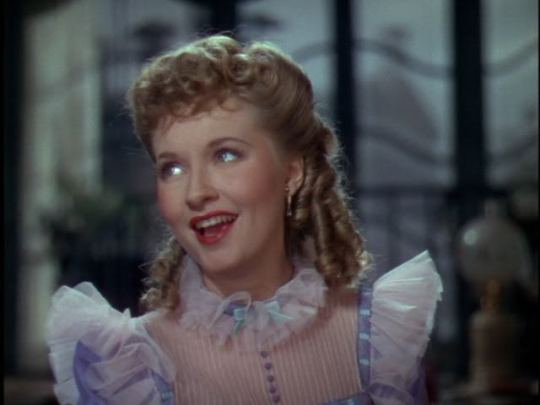
This production of Leroux's epic romantic tragedy reached the finest level of performance and cinematic artistry. Susanna Foster and Claude Rains as Christine and Erique were immortalized beyond even the trappings of the Universal horror spectacular. If you really look at the story, they were simply two individuals each dedicated to their craft of making music and longing for their art to push them towards greatness. Erique Claudin was a man who had been backed into a trap based in his own desperation and longing, his mind broken under the pressure of wanting something *and someone* so passionately (fame as a great composer and the lady he loved), but never obtaining because of the forces around him. Ultimately, poverty, stress and despair was his undoing, as it is for many talented, downright gifted people throughout the years who've lost out on reaching the potential they’ve deserved. Christine was a creative who DID enter the realm she'd always wanted to be a part of but who was being propelled by forces both within, like her grace and talent, and without, such as Erique’s frenzied determination. This story of Phantom of the Opera is to me at least, the ultimate representation of the madness that can occur when one human being tries to live through another. It is also an examination of when the natural lightness of love morphs into darkness and obsession.

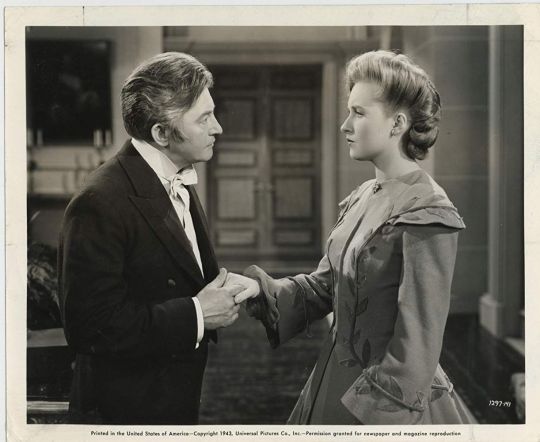
If you're looking for a film that captures your imagination, 1943's Phantom of the Opera is most definitely a worthy way to spend a few hours. I recommend lots of popcorn, a hot beverage, and a thick blanket while you enjoy the dazzling costumes, fascinating story and technicolor glamour and song. Enjoy! 4 stars.
#phantom of the opera#susanna foster#claude rains#universal#universal horror#classic horror#classic film#old movies#1940s#women in film#classic actresses#old cinema#classic cinema#horror#women in horror#women in cinema#great performances#breakdown#music#technicolor#epic#Hollywood films#old hollywood#classic hollywood#Golden Era of Film#golden era#movie review#actress spotlight#commentary#blogging
48 notes
·
View notes
Text
Queen Behind the Scenes: Ida Koverman’s Reign at MGM By Kim Luperi

Her title may have been executive secretary to MGM studio head Louis B. Mayer, but she “wields a scepter of power second only to that of her employer,” journalist Sheila Graham wrote in 1937. Indeed, Ida Koverman was one of the most powerful women in Hollywood during the 1930s and 1940s, but you’ve probably never heard her name. As a former Hollywood assistant myself, I’m paying homage this International Women’s Day to a woman who “rarely operated in the shadows, even if history has pushed her there,” as Jacqueline R. Braitman declared in She Damn Near Ran the Studio: The Extraordinary Lives of Ida R. Koverman.
Born in Ohio in 1876, Koverman grew up with a passion for the arts and taught herself basic business principles in her early jobs. After becoming a wanted woman in 1909 for initially failing to appear as a witness in a bizarre bribery case, she entered an apparent marriage of convenience to distance herself from her past and used her new surname to start over on her own in New York. There, Koverman became involved with a plethora of female-focused community initiatives and established Brooklyn’s Women’s Athletic Club.
By the early 1920s, Koverman moved out west and rooted herself in the political landscape of Southern California. The enterprising woman leveraged her ambition, loyalty and aptitude to become executive secretary for the presidential campaigns of Calvin Coolidge in 1924 and Herbert Hoover in 1928. By the decade’s end, Koverman constructed a far-reaching partisan network and established herself as an esteemed political operative within the Republican Party.
Mayer had political ambitions too, which is how he and Koverman met in the mid-1920s. It was she who played matchmaker – as she did with many – to facilitate his involvement in various Republican organizations. As Mayer must have noticed, Koverman’s strength for prioritizing a high workload, negotiating with big personalities, building relationships and harnessing public support made her a natural for the film industry.

According to Braitman, after Hoover’s inauguration, Mayer furnished Koverman with a desk and “told her to make a job for herself.” She did, and she’d remain with MGM until her death in 1954. Though she undertook typical assistant duties, Koverman also operated as an executive – one of the most powerful at MGM. She supervised Mayer’s schedule with daunting yet considerate authority as the “last and toughest obstacle” before visitors entered his office and did the same facilitating for other departments if needed. Koverman also served as Mayer’s advisor in the political arena; in fact, many publications touted her as his personal political expert. Thus, on any given day, she could secure a star’s Hollywood Bowl parking pass one moment and strategize with a Senator’s publicity director the next, according to the Christian Science Monitor in 1950.
Koverman became Mayer’s confidante, and he greatly respected and trusted her judgement and aptitude for identifying audience taste. She could (and did) take over when he was away from MGM, and her versatility proved crucial to studio operations; for instance, she fostered a family-like culture and highlighted employee accomplishments by establishing The MGM News in 1936, and her far-reaching connections made her indispensable in lobbying for MGM’s interests when she spotted proposed state legislation that could affect business. As noted in Variety’s 1942 article “The Women Who Run the Men,” “… there’s very little taking place on the lot that she hasn’t exerted some influence… and with the carte blanche she enjoys in the matter of executive decisions, she has a lot of pretty important gents tiptoeing around her with devout response.”
When it came to talent, Koverman possessed a knack for discovering and nurturing actors and musicians. Indeed, it was Koverman who saw the potential in Robert Taylor, promoted Clark Gable’s sex appeal and proved instrumental in Judy Garland’s discovery. Add to that list Lena Horne, Nelson Eddy, Deanna Durbin, Mario Lanza and others – the number of performers Koverman recruited and mentored is enormous. Her eminent position also meant balancing support for the actor offscreen with MGM’s expectations onscreen. In Garland’s case, when Koverman disagreed with Mayer’s dietary regimen for the juvenile star, she secretly directed the MGM commissary to be less draconian with Garland’s meals.

Koverman continued her cultural and political involvement at MGM, becoming director of the Screen Women’s Press Club and taking on various other community leadership roles. She also remained vocal in her beliefs, including her anti-communist rhetoric and support of the Moral Rearmament movement, which promoted spiritual uplift within movies. After almost 20 years with MGM, Koverman earned a promotion to head of public relations in the late 1940s, and the Los Angeles Times recognized her career achievements by selecting her as a Woman of the Year in 1950.
Koverman operated efficiently and openly behind the scenes, successfully executing her extensive duties while enabling the interests of high-powered people and growing her own influence. Gossip columnist Hedda Hopper observed that Koverman’s “special positions of power gave her a phenomenal chance to do good.” Indeed, Koverman told Hopper, “If you can’t help somebody, what are you put here on earth for?” Perhaps Koverman’s greatest impact was through the lives she touched, personally and professionally.
#MGM#International Women's Day#Ida Koverman#publicist#studio head#Louis B. Mayer#old Hollywood#studio system#TCM#Turner Classic Movies#Kim Luperi#female executive
55 notes
·
View notes
Text

Screenland magazine, July 1938: What Makes You So Funny, Mr. Auer? By Margaret Mary Jolsyn
Transcript of article:
As is the inescapable fate of office girls, Jane and I were doing our shopping in the Saturday afternoon whirlpool of the Loop, buffeted by determined females with hats askew, and mad, bargain-hunting eyes. Above the roar of traffic, our trained ears discerned the harsh croaks of women with parched throats who had staggered from drug-store to drug-store in vain search of a stool and a coke.
Heads down, we rammed our way through the mob, until our eyes were caught by as soothing a sight as one could hope to see. It was a large poster of Mischa Auer in front of the Palace theatre. Above his high hat appeared the legend, “Today, In Person.”
Blessed Mischa Auer, who no matter how dry and cracked the creek of your spirits, can cause it to overflow with laughter like the Ohio river in floodtime! Mischa, the Thief, who steals every picture in which he appears!
“I think,” I said to Jane, “that I will drop around back-stage and interview Mischa Auer.”
“Why, hello, Louella Parsons,” she said. “Fancy meeting you in on old lapin coat! Rehearsing for a character role, I presume?”
“Want to come with me?” I asked, shaking her shower of sarcasm off my back, like a dog.
“You’re not really going to interview him?” she asked. “Do you have an appointment?”
“No, but I phoned back-stage this morning. The man in the office said Mischa is a good guy; he’d probably talk to me if I caught him before his number. Come with me. If he won’t talk- at least we’ll see him.”
Jane looked down wistfully at her rubbers. “Mmm, I’d love to see him. But I only have a half hour, and Fields, has a sale on piqué blouses- a dollar ninety-eight. And I want to return the cologne I bought last week. Besides, the sidewalks are bone dry and I am wearing rubbers. How can a girl embark on high adventure wearing rubbers? I’d quail before those great liquid orbs of Mischa’s. What would he think? ‘There’s a clod,’ he;d say to himself.”
“OK,” I said. “Get your piqué blouse. I am going to see Mischa Auer.”
She hesitated uncertainly, as though to follow me, then glanced once more at her rubbers, and shook her head. “Report every detail. Don’t miss a twitch of his eyebrow,” she said, and waved goodby.
The doorman admitted me without question and waved me into a reception room overflowing with school children. Plump little girls in bowler hats and clean bright hair curling Deanna Durbin style, sat on the davenport. Their hands clenched autograph books and their eyes were tense and excited.
“When’s he coming?”
“Why doesn’t he hurry up?”
“Aw, this is nothing,” preened a child-about-time, evidently an old-timer at the autograph game. “Last summer the kids waited four hours for Martha Raye.” She looked disdainfully at me as though I were a big bully, waiting to snatch autographs from the hands of babes.
“Four hours?” exclaimed a small boy, striding up and down the room, his hands in his leather jacket pocket. “Then the kids were suckers. I like Mischa Auer, but I wouldn’t wait four hours for any man.”
And then Mischa appeared, tall, lively-eyed, and far more handsome than he is on the screen. The children loosed themselves against his knees, proffering autograph books. I managed to shout over their heads that I wanted an interview. “I have no time now,” he said. “I tell you what. Go inside and see the show. When the acrobats appear, come back here again, and I will give you an interview.” I cast a haughtily triumphant glance at the know-it-all child-about-town, whose mouth was agape, and disappeared into the movie palace via the “strictly-private” route.
As soon as the picture was over I returned back-stage. Four young and tender little girls- reporters for their school papers- sat patiently in the reception room. Mischa appeared, and beckoned to all of us with a wave of his long arm.
“Follow me,” he said.
He led the procession, executing a few dance steps, and waving an imaginary baton. The four schoolgirls and I followed after him, single file, through the wings- pausing when he paused to chat to a stage-hand, and then onward, up the stairs to the dressing-room.
There were only three chairs in the room. He placed them all together and said, “Now, two of you can sit in the cracks. This is a mass interview, so fire away. But one question at a time, please.”
He began to divest himself of his shirt, and his broad chest gleamed before five pair of startled, quickly lowered eyes.
“Oh, Jane,” I thought, “what you missed!”
Silence answered him. Neither I, nore the four representatives of their school papers, pencils poised above notebooks, could think of a thing to say.
“What is it?” he demanded, his eyes widening in hurt surprise. “The chest? But you see the same on the bathing beaches, do you not? In a dressing-room, one undresses. That is logic, is it not? Ah, well!” He disappeared into the bathroom and poked his head around the door.
“We came to find out what makes you so funny, Mr. Auer,” said one of the little girls in a high, intense treble.
“Call me Mischa,” he sho
3 notes
·
View notes
Text
GOING TO NEW DEPTHS WITH HARRY STYLES - A Case study of ‘Falling’ by Audouy.com
Intro
The concept was to shoot Harry performing at a grand piano in an elegant but decaying Parisian interior. The piano would gradually fill with water that ultimately overflows into the ornate room, gradually filling the space completely with water until Harry and his piano are completely submerged.
An efficient 15’ x 16’ set was built using water-safe materials by Vision Scenery and then fastened to rock-and-roll truss. The entire volume was lowered on camera by a 180-ton crane, which simulated the effect of the rising water by fixing the camera to the set while the set descended into a water tank. To make things more complicated, the video would be shot practically, with no stunt performers and over the course of only 12 hours.

Designing a Set to go Underwater
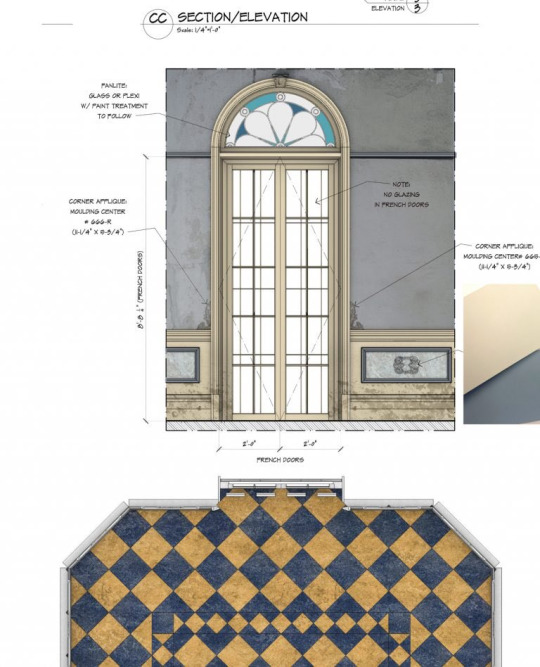

Piano Rigging at Full Scale: SPECIAL EFFECTS
Local special effects company Full Scale Effects was charged with the task of rigging the piano. Due to the extremely tight prep schedules common to music videos, there was just enough time to install the plumbing into the piano so that water could be pumped into its body, but no time to test.
The team, headed by SPFX Supervisor Dave Peterson, worked up until an hour past call-time to continue to rig the piano so that it would not only hold water, but also leak properly and at the requested speed.
The SPFX team of four completely disassembled the 100-year-old piano, including removing the entire brass soundboard, so that a Visqueen lining could be fastened into the interior.

There must have been three-dozen nuts and bolts holding the musical instrument together—all just about impossible to get to.
After the Visqueen was installed, and the piano reassembled, the unit collected water that then “waterfalled” off the sides and out of the keys as Harry played. The effect was beautiful, and entirely achieved as an in-camera effect.
The 100-Year-Old Piano: SPECIALTY PROP

Set Decorator Neil Wyzanowski purchased all the dressing including a blue Murano glass chandelier and a Venetian-style mirror, and also printed rennaissance-era paintings. The piano turned out to have been once owned by Hollywood Golden-age actress and singer Deanna Durbin, who passed away in 2013 at age 91.
In order to create a character for the piano that echoed Harry’s own personality, inspiration was found in Harry’s own tattoos.
Fun, vintage engravings were sourced that were inspired by pirate tattoos: a whale, a harp, a clipper ship, a rose, and even a rooster.

These, along with classical ornament, were hand-painted onto the piano and bench in metallic gold paint by local artist Jayne Morgan, and then sealed with a heavy clear coat.
After hours of being submurged underwater, the piano started to deteriate beautifully on camera, with black keys falling away like broken teeth, and the white film covering the white keys peeling up like dead skin.

The “Falls Lake” Tank: LOCATION
The music video was shot at the massive “Falls Lake” tank at Universal Studios, as it was the only water tank in Los Angeles with adequate specifications. The center “pit” of the tank was filled with 500,000 gallons of water, which was filtered to be optically clear and also heated (to keep Harry comfortable during our winter night shoot).
A team of safety divers not only ensured Harry’s safety, but also helped reset the set dressing between takes.
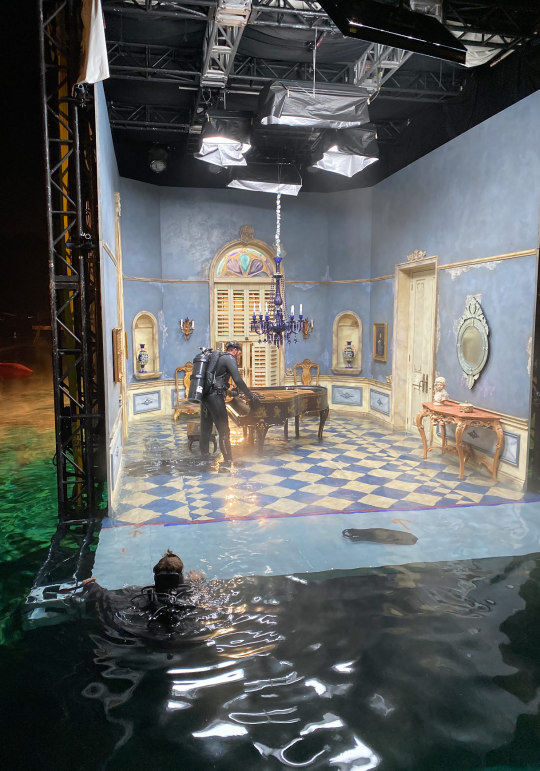


The complete case study can be found on Audouy.com here
#audouy#falling#falling mv#falling case study#falling bts#falling behind the scenes#behind the scenes#the making of#hs2#harry styles#fine line#hs#harry#h#nov 19 2020#nov 2020#long post
34 notes
·
View notes
Text
184. the woods are full of cuckoos (1937)
release date: december 4th, 1937
series: merrie melodies
director: frank tashlin
starring: mel blanc (owlcott, walter finchell, milton squirrel, wendell howl, fox, raven mcquandry), tedd pierce (ben birdie, tizzie fish, andy bovine), sara berner (polly gillette, canary livingstone)
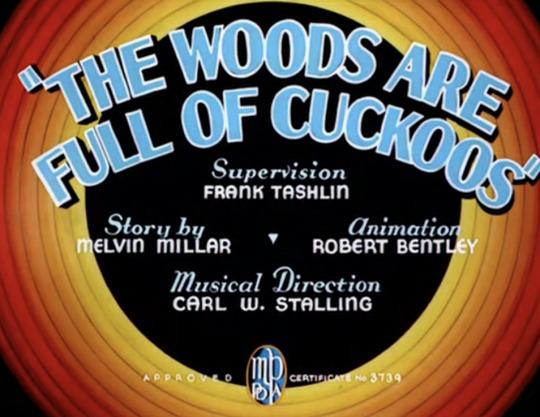
this cartoon gets the honorable award of possibly being the most dated warner bros. shorts in its vast repertoire of cartoons. not to worry! this will be a fun cartoon to unpack—i love delving into the shorts that involve extensive research. learning something new is something that‘s very rewarding to me, and i hope it is to you, too!
a giant ode to the short lived radio program community sing (lasting from 1936-1937), the short chronicles a woodland radio show hosted by a variety of caricatured animals putting on various acts.

iris in to the ringing of a bell. a pudgy, bespectacled owl rings it as he stands illuminated by the moonlight, preaching to all of the woodland critters, ready to start the show. he introduces himself as “owlcott”, a take on commentator alexander woollcott. he “blandly announces” (his words, not mine) the introduction of the master of ceremonies, ben birdie--a bird caricature of radio personality ben bernie, “the old maestro”.

birdie’s caricature is not new to audience’s eyes. the caricature, along with a handful of others, is reused from friz freleng’s the coocoo nut grove from 1936, a short that is very similar in vein to this one. tedd pierce provides birdie’s suave, velvety vocals as he introduces the program, only to be interrupted by the nasally cries of mel blanc. out pops walter finchell, a caricature of bernie’s faux-enemy walter winchell, both of whom carrying a notorious (and fake) feud in the radio-verse. it was common for winchell to interrupt the smooth-talking bernie, either throwing pranks or remarks his way, to which bernie dismissed every time. indeed, a signature tashlin upshot angle reveals finchell dropping an egg on top of birdie, who blocks it nonchalantly with a handy umbrella.
art loomer’s backgrounds for the cartoon are absolutely gorgeous. they’re vibrant in color, very lush and painterly, but remain playful and sophisticated at the same time. they certainly serve as a highlight to the short. and, as always, carl stalling’s scores are a blast to hear--his sardonic, wah-wah rendition of “cause my baby says it’s so” is a jolly juxtaposition to the prior score of “love is on the air tonight”, the latter being the song’s cartoon debut. it would be reused in cartoons such as the daffy doc, whereas “cause my baby says its so” was heard previously in rover’s rival.
birdie introduces a clever squirrel caricature of milton berle, whose routine gets interrupted by a little parrot named polly. polly is a take on eileen barton’s character, little jolly gillette, who was portrayed as the daughter of the show’s sponsor. polly and milton go through their act together, polly bluntly (yet innocently) announcing “my daddy says ya gotta let me sing ‘cause he’s a sponsor!” you can listen to real recordings of their banter here!
volney white’s animation of milton and polly is lively and jovial, constantly moving. milton energetically introduces us to our next star, pointing in the wrong direction and fixing it last second as he gestures towards a bird caricature of country singer wendell hall.

even if viewers don’t recognize the bird’s counterpart, they will most certainly recognize his voice--mel uses his foghorn leghorn voice for wendell “howl”. of course, foghorn wouldn’t debut for another 9 years, but that’s another story. the animation of the raucous bird is fun to watch as he extends his neck and wraps it around in coils around the microphone stand. random? yes, but fun nevertheless.

perhaps even more commendable is the staggering crowd shot that succeeds wendell’s scenes. the crowd is mirrored horizontally, but that doesn’t lessen the blow from how claustrophobic it is. wendell asks the audience to get out their songbooks and turn to page “22... no, page 44. uh, no, uh, page 28. uh, 42, uh, 36, uh, 45...”
wendell is transformed from an entertainer to an auctioneer, spitting out numbers at rapid pace as his crowd frantically tears through their songbooks. finally, he concedes. “oh, never mind. we won’t use the books.” off screen, the crowd roars in unison: “OH YES WE WILL!” with that, wendell is generously showered with a barrage of books, buried in the pile of rejected papers. the timing of the scene is comedically sharp and energetic, one of the more entertaining acts of the cartoon.

now, for the real song number, lead by goat and bear caricatures of billy jones and ernie hare (would a rabbit caricature be too on the nose?) respectively, animated by volney white. they march out onto the stage--er, tree trunk--and open the curtains to reveal a sing-along to the eponymous song. thus, the camera pans into the lyrics as everybody bursts into the all-too-earworm-causing song number.
as the crowd, ben birdie and walter finchell all lend their voices to the song, a fox caricature of fred allen sings “swanee river”, clashing with the unity of everybody else. in a nod to friz freleng’s toy town hall where the same routine was executed, a little bunny excitedly coos “ohhhh, mr. allen! you’re singing the wrong sooooong!” the fox bursts into everybody’s favorite Mel Blanc Yell as he repeats a frequent ‘30s catchphrase: “WHY DON’T SOMEBODY TELL ME THESE THINGS!?”
featured in the song is a seemingly interminable cast of celebrity caricatures, all introduced as the camera pans across the screen, each lending their voice to part of the song. some puns require more effort than others (dick powell as “dick fowl” rolls off the tongue better than al jolson as “al goatson”). caricatures include:
eddie cantor as eddie gander, sophie tucker as sophie turkey, w.c. fields as w.c. fieldmouse, dick powell as dick fowl, fats waller as fats swallow, deanna durbin as deanna terrapin, irvin s. cobb as irvin s. frog, fred macmurray as fred mcfurry, bing crosby as bing crowsby, al jolson as al goatson, ruby keeler as ruby squealer, lanny ross as lanny hoss, grace moore as grace moose, and finally lily pons as lily swans.
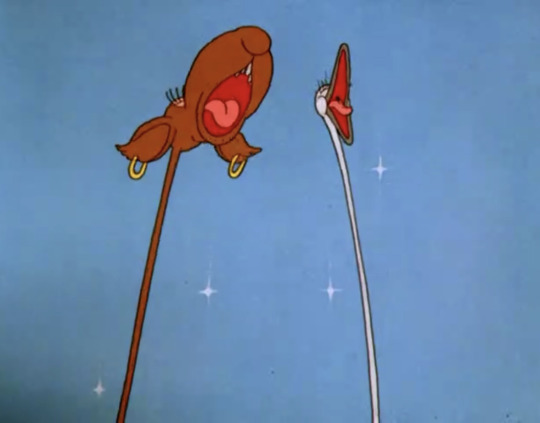
speaking of grace and lily, they’re both highlighted as they fight to out-perform each other, seeing who can sing the highest note. tashlin pulls of a rather intriguing camera move: as the pan settles on the two of them, the background changes. it’s a subtle maneuver, but smart thinking nonetheless--especially since the camera extends into a vertical pan. as both women fight to sing the highest note, their necks extend, both of them scaling high into the night sky, harmonizing on one final shrill note. they both crumple back into the stands, exhausted by their efforts. some fun exaggerated animation for sure--one wonders how much further this would have been pushed had this been tashlin’s second stint at WB rather than his first. his speed often rivaled, if not out-performed, tex avery’s.

birdie and finchell have a brief interstitial together before making way for a raven caricature of haven macquarrie (raven mcquandry). his sequence is almost jarringly short, but full of fun drawings and poses--the pose of him standing curtly with his arms crossed is awfully reminiscent of izzy ellis’ work under tashlin and later bob clampett in the mid ‘40s. mcquandry asks “do YOU wanna be an actor?”, parotting the name of his real life counterpart’s show so do you want to be an actor? the audience shouts “NO!” in unison, causing mcquandry to do a take and shrug dubiously. though the scene is only a few short seconds, the animation brings forth some much needed vitality.
next is a penguin caricature of joe penner, singing a hilariously out-of-tune rendition of “my green fedora”. the animation is reused from the cartoon of the same name (notice how he doesn’t have penguin feet!), which was also used in toy town hall. not a complaint, but more an observation--this is by far the most humorous performance of the song yet, sung by blanc rather than tommy bond.
another fun scene with some vivacious animation is a sequence featuring a mule caricature of martha raye (dubbed moutha bray), singing a cover of “how could you?”, which has been featured as an underscore in cartoons such as porky’s badtime story and its later remake, tick tock tuckered. raye’s large mouth served as prime material for caricatures, as we see here. the animation is snappy, fun, and vivid--she finishes her song by “swallowing” the camera, an old trick that beckons memories of the harman and ising cartoons of animation past.
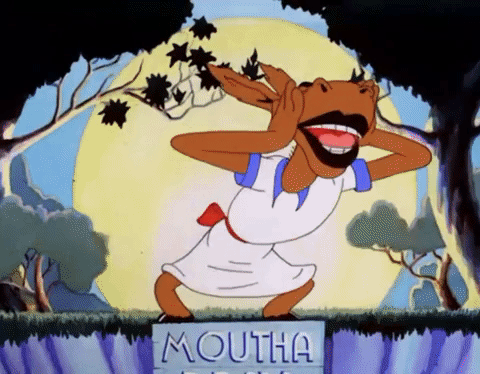
an interesting trend in the ‘30s WB cartoons is the trend of playing with the iris, whether it was the closing iris out or an iris in between transitions. tex avery would consistently play with the final iris out on his cartoons, whereas directors such as friz freleng and bob clampett would use one as a transition between scenes. here, tashlin uses the “swallow the camera” technique as a segue for an iris in, tedd pierce’s falsetto squeaking “hello folksies!” as we’re introduced to a fish caricature of tizzie lish, a character played by bill comstock on al pearce and his gang.
though tizzie has long faded into obscurity (as has the entire community sing radio show), it’s still quite easy to appreciate pierce’s vocals and mannerisms as he portrays the character. it’s always a joy to hear him doing voices for cartoons--he’s never been my favorite writer on the crew, but he was an excellent talent as a voice actor. his squeaky deliveries, matter of fact deliveries “mix them up... are you mixing? my friends say i’m a good mixer. are you? or aren’t you?” as tizzie haphazardly dumps food items and their respective utensils into a bowl and prepares the meal are nothing short of hilarious. the timing is very well executed and can be appreciated regardless of background knowledge.
after humming a pitchy rendition of “the lady in red” while waiting for her concoction to bake in the waffle iron, tizzie removes the homemade waffle and discards it, instructing the audience “now take the ‘wiffle’ out and eat the iron. you must have iron in your system. or should you?” thus concludes tizzie’s act, certainly heightened in hilarity by pierce’s vocals and timing.
for the final act, ben birdie introduces a possum caricature of louella parsons, the host of the radio program hollywood hotel, which served as a way to advertise upcoming movies by featuring guest stars enacting some of the scenes. here, we have caricatures of jack benny (as jack bunny, the first of his many reoccurrences), mary livingstone (canary livingstone), and andy devine (andy bovine).
tedd pierce voices andy bovine, whose voice burlusqued not only in this cartoon, but to a greater extent in friz freleng’s my little buckeroo not even a year later. devine, a western star, was notorious for his scratchy, shrill voice which was rife for comedic opportunity. indeed, this scene here with pierce’s vocals is nothing short of hilarious:

the trio chronicle the prodigal’s return, in which bunny and canary coo over their baby son. out of the bassinet pops incongruously large bovine, who shrieks “HOWDY MAAAA! HI PAAAA!”, the sheer volume of his voice enough to blow both of his parents away and out of the scene. and, with that, the scene ends, red curtains colorized from porky’s romance marking the sequence’s end. short, sweet, to the point, and hilarious.
ending right where the cartoon began, the owl caricature of alexander woollcott bids us farewell, the iris closing in on the bell he rings as he exclaims that all is well.
like so many other cartoons i’ve reviewed, this is one that i slowly warmed up to upon rewatching it and typing out the review for myself. i didn’t entirely dislike the cartoon upon my first watch, but it’s undeniably dated and deserves its title as possibly the most dated cartoon. without further research, some of the jokes and caricatures (if not all of them) are difficult to appreciate. the animation has bursts of energy throughout the short, the highlights being the scenes featuring raven mcquarry and moutha bray, but otherwise remains relatively simple and conservative. tashlin does incorporate a few intriguing camera angles throughout the cartoon, but many other entries of his are far more cinematic.
however, despite all of that, this cartoon is not without its bonuses: art loomer’s backgrounds are stunningly gorgeous and rich, and as someone who loves the lush, painterly backgrounds of the 1930s, this is heaven to me. and, as i mentioned previously, tedd pierce’s scenes are great--the tizzie fish and andy bovine sequences are undeniable comedic highlights.
so, if you’re willing to dedicate time to put in the research for this cartoon, you’ll find it’s quite fascinating! i’m certain this was a much bigger gut-buster in 1937 than it is in 2020, but even then, this is a good cartoon for people such as myself who love to learn more information and seek out facts. as a result, i’d recommend it to people who fall into that category. if you’re just someone who wants a good laugh and a leisurely watch, there are more interesting cartoons that lie ahead. you won’t miss much by skipping it.
with that said, here’s the link!
29 notes
·
View notes
Photo
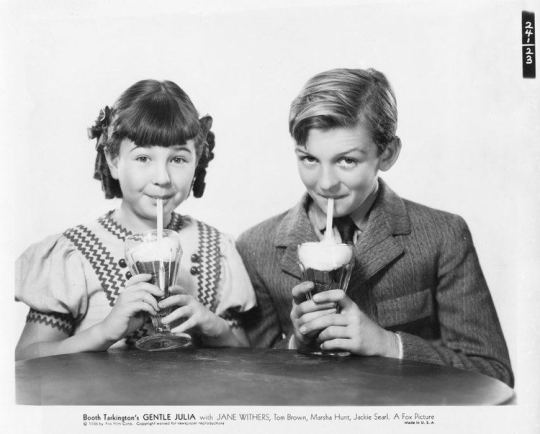
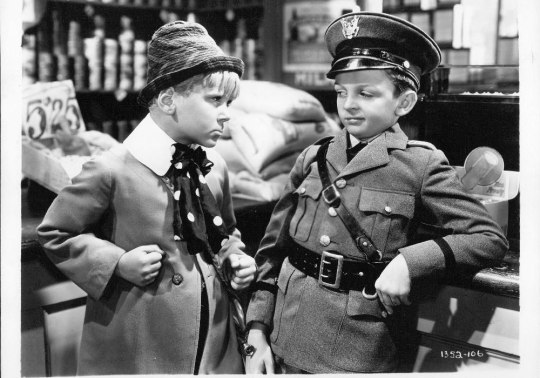

Short article from the early 1960′s on former child actor Jackie Searl. This is interesting, as next to nothing is known about Jackie Searl’s personal life or even behind the scenes of his films.
In the 1930′s, Searl appeared in films such as Tom Sawyer, Skippy, Peck’s Bad Boy, and Little Lord Fauntleroy. He nearly always played the antagonist, appearing alongside child actors like Jackie Coogan, Mitzi Green, Jackie Cooper, Deanna Durbin and Freddie Bartholomew.
Between 1929 and 1937 he appeared in 40 films, most with a major role. Making him one of the most accomplished actors of the early 1930′s, and easily one of the most overworked child actors in the history of Hollywood. He kept acting up until the 1970′s. He served as a radio instructor in WWII, and that is pretty much all that is known about him. His story lost to time.
2 notes
·
View notes
Text


Propaganda
Marsha Hunt (The Human Comedy, College Holiday, These Glamour Girls)—To be honest, I haven't had the chance to see a lot of her films, but she was an amazing person. A beautiful, popular actress during the 30s and 40s, Marsha was unfairly blacklisted during the Red Scare for speaking out against McCarthyism. Instead of letting that stop her, she focused her efforts on humanitarian work for causes such as world hunger, poverty, and pollution. She was also a support of same-sex marriage. Side note to any fellow fashion history nerds, she wrote a book on 30s-40s fashion. She stayed true to her beliefs through the years, and passed away at the age of 104 in 2022.
Fredi Washington (Imitation of Life, The Emperor Jones)—She was a beautiful woman whose movie career was struck short because she refused to pass as white, but she did get to star with the greats like Cab Calloway, Hattie McDaniel, Paul Robeson, Duke Ellington, Louise Beavers, etc. Being a person of moral and conviction is hot. Also, she knew ballet and was a beautiful dancer in general.
This is round 2 of the tournament. All other polls in this bracket can be found here. Please reblog with further support of your beloved hot sexy vintage woman.
[additional propaganda submitted under the cut.]
Marsha Hunt:
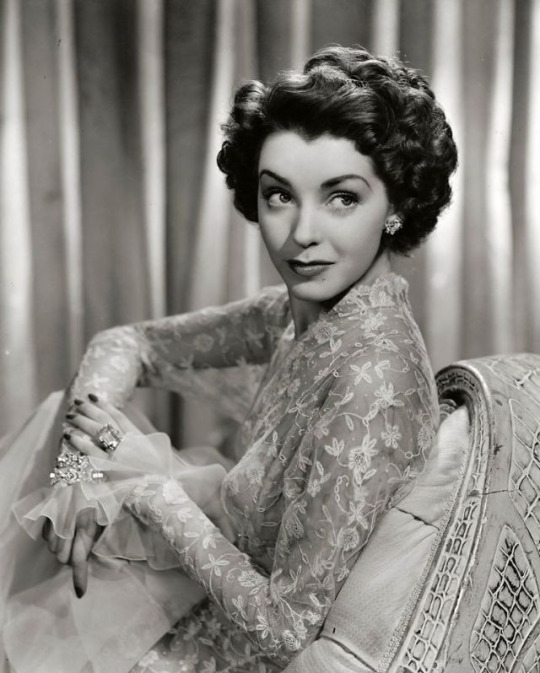
Marsha Hunt first signed with Paramount in 1935 at the age of seventeen, kicking off a prolific career as a beloved Hollywood star and fashion model. Her distinctive profile and facial structure earned her the nickname “Curly Lips”: “Besides a rounded forehead, almost no nose bridge, and a nose that curved upwards, even my lips curled up at the corners. Ronald Coleman and his wife Benita told me they used to describe me to each other as ‘Curly Lips.’ I decided that anything that helped two people I adored take notice of me would no longer keep me awake at nights.” (The Way We Wore, p.95) Marsha appeared in about seventy films over almost eighty years, including Hollywood Boulevard, College Holiday, Easy Living, These Glamour Girls, Irene, Pride and Prejudice, Blossoms in the Dust, Thousands Cheer, The Human Comedy, and many more. She was blacklisted during the McCarthy era for publicly defending Hollywood from the accusations of the House Committee on Un-American Activities, alongside Lucille Ball, Humphrey Bogart, Deanna Durbin, Henry Fonda, Judy Garland, Frank Sinatra, and many other members of the Hollywood community.
Fredi Washington propaganda:
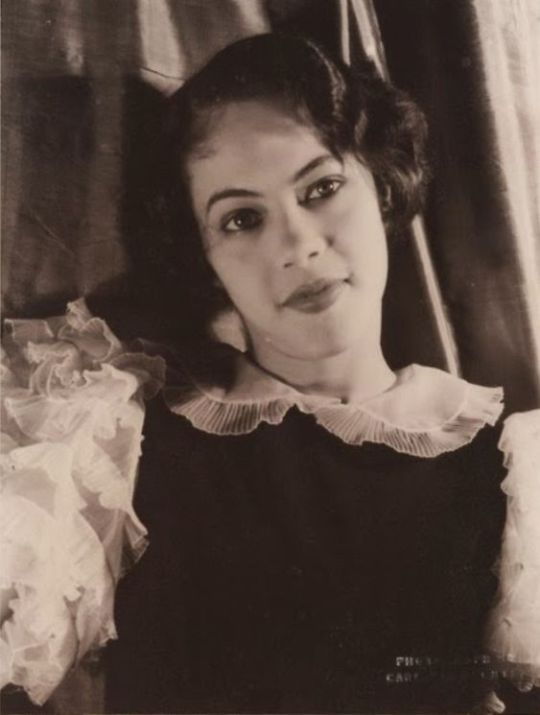
Short Hollywood career for being too light-skinned to play maid roles, but too brown to be cast opposite a white man in the time. Civil Rights activist. Worked with Paul Robeson to create the Negro Actors Guild. Heavy work in theatre and the NAACP.

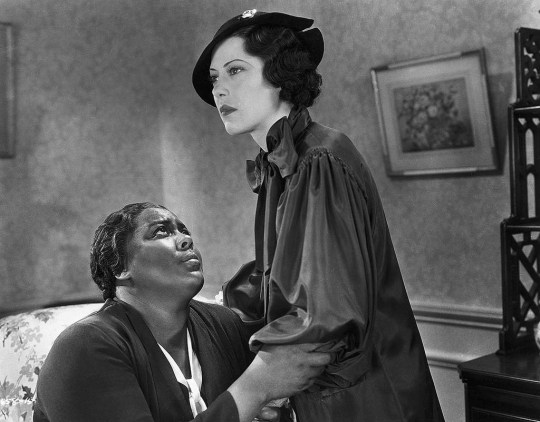

82 notes
·
View notes
Photo
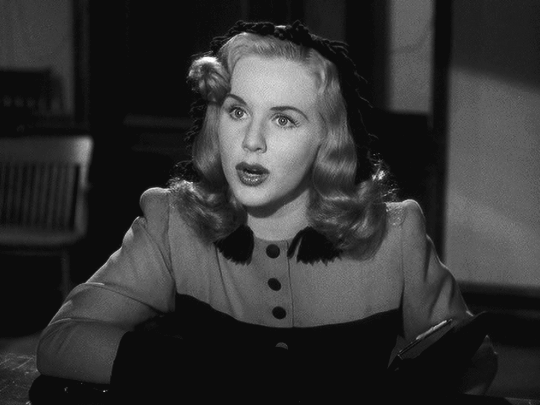

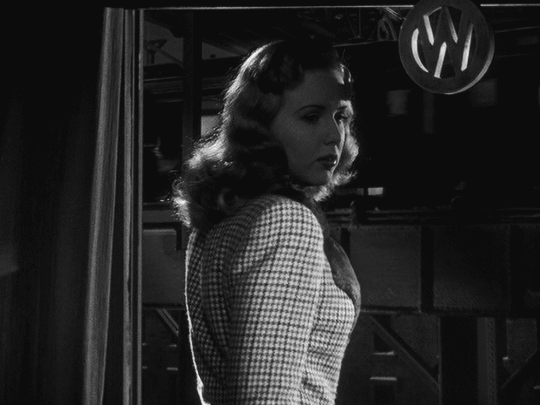


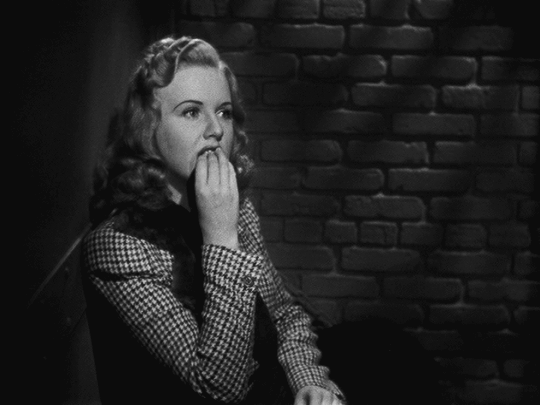
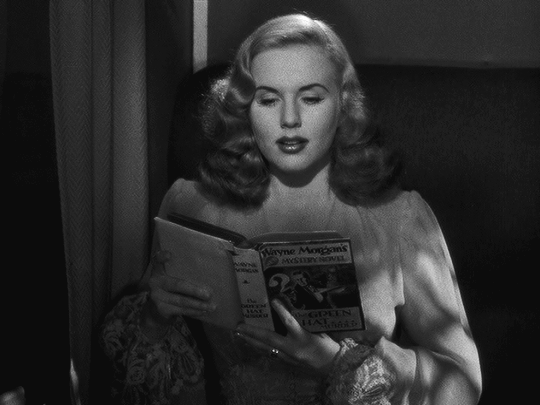
"Oh, this isn't the big house, Haskell. This is more like their New York office."
DEANNA DURBIN as Nikki Collins in
LADY ON A TRAIN (1945) dir. Charles David
#oldhollywoodedit#classicfilmedit#Deanna Durbin#Lady on a Train#category: Lady on a Train#person: Deanna Durbin#*mygifs#*loatedit#baby girl. baby
476 notes
·
View notes
Text
’The 2019 Winnipeg Fringe Festival is underway. I’m writing up two shows in this post. The first is Ingenue, which stars Melanie Gall. Ingenue centers around the stories and songs associated with Deanna Durbin and Judy Garland.
*Show times for both of the shows listed here can be found by clicking on the show’s link in the copy below.
The Ingenue and Opera Mouse posters outside the Manitoba Theatre Centre.
Fringe Festival Traditions
Ingenue will mark the sixth show by Ms. Gall that I will attend. One of the remarkable things about her Fringe career is that she is always mounting new shows. She does repeat some of her others as well, but she is always stretching herself as a performer.
One of my Fringe Traditions is Butter Chicken form India Palace.
Attending a Melanie Gall show is one of my Fringe Festival traditions. There are a couple of others. One is my visit to the India Palace food tent. Every year I go with either an order of Curry Beef or Butter Chicken. This is a quick, tasty meal. I also go for a visit to the beer garden while I eat. This year’s sponsor is Sleeman’s, and while it’s OK, after the beer at Sookram’s, it’s a bit of a letdown.
Rain Delay before Ingenue
After eating I contemplated running home to drop some things off. However, just as I started to leave, it started pouring down rain. Luckily the beer garden is not far from Across the Board Game cafe. Ducking in there allowed me to wait out the rain delay while enjoying a piece of Saskatoon Berry Pie, and a hot chocolate. Depending on how your Fringe viewing is scheduled, A meal and a board game from Across the Board is a great way to break it up.
#gallery-0-7 { margin: auto; } #gallery-0-7 .gallery-item { float: left; margin-top: 10px; text-align: center; width: 50%; } #gallery-0-7 img { border: 2px solid #cfcfcf; } #gallery-0-7 .gallery-caption { margin-left: 0; } /* see gallery_shortcode() in wp-includes/media.php */
A rich and warming cup of Hot Chocolate.
A satisfying dessert of pie and ice cream.
Ingenue
Ingénue tells the story of Deanna born (Edna Mae) Durbin, one of the biggest start of 1930s and 40s Hollywood. Her story starts here in Winnipeg, where she lived for two years, before her family moved to Hollywood. Despite here short stint in this town, she is still known as Winnipeg’s Sweetheart. There, as a young teen, she wound up under contract to MGM studios and Louis B. Mayer.
Every aspect of life was under studio control, including education. As a result Durbin attended school alongside the likes of Mickey Rooney and Judy Garland.
It’s Durbin’s relationship with Garland that forms the storyline of Ingénue. The show is set in Paris around the time of Garland’s death. Durbin, recounts her career and friendship with Garland to a reporter(never seen), who came to Paris to track Durbin down.
On stage with Melanie after the show.
All About Deanna
Several things make this a really great show. First and foremost, there is Deanna Durbin. Despite being on of the biggest stars of her day, she’s large forgotten. She was a remarkable woman, who carved her own path through the Golden Age Hollywood Studio system. Gall does a fine job of capturing this element of her life. This also serves to contrast with Garland’s story. One amazing part of the Deanna Durbin story is that she walked away from Hollwood and fame while still in her late 20s.
The back of the Ingenue program displaying some of Galls available CDs
Talking with Melanie after the show, it is clear that Ingénue is the most personal of the shows that she has done to date. She worked for six months getting the script done and it shows. This is the most complete script and plot of any of her shows.
Durbin and Garland together by the piano.
As always, Gall’s singing is superb. One of the things I always appreciate about her shows is that she pays homage rather than imitates. For example, on Somewhere Over the Rainbow, she uses her own phrasing rather than copying Garland’s.
Being a Fringe show Ingenue is limited in the ability to take on Durbin’s life. Given Gall’s passion for her subject, I hope she gets a chance to offer a future, deeper look at Durbin’s story.
Ingenue Location
The Tom Hendry warehouse where the show is stage is a great location. One that allows for the full strength of Gall’s performance to shine through. She wrote the play with this theatre in mind.
This is definitely a must see Fringe Show. The singing is great, and the story shines a light on the life of a remarkable woman from Hollywood’s Golden Stage. Tell all of your friends to take in this show. The show is entertaining and educational, and should leave you and your friends talking about it and Deanna Durbin after the show is all over.
After the show I headed off for a beverage at the King’s Head, along with Melanie and Eden Ballantyne. Ballantyne is a friend of Melanie, and also a Fringe Performer. Eden is a storyteller and I really enjoyed him last year when he starred with Gall in Carmen and Don Jose. While enjoying our beverages we were joined by Fringe Fest veteran Jem Rolls.
Mix Tapes From My Mom
My Fringe going actually got off to a start on Tuesday. I happened to stop off for an iced coffee at X-Cues. I knew they were hosting a show, but I didn’t realize they were offering a preview for Fringe volunteers.
The show they were putting on is Mix Tapes from My Mom, featuring Cory Wojcik. I wandered in shortly after the show started. I sat at the bar, and didn’t get all of the details of the show, but I got the main story.
A Day in the Life of Cory
The story revolves around one day in Cory’s life. A day unlike any other. One at which his relationship with his mother is at the center. The show is at times hilarious, poignant, tragic, and sad. Yet ultimately it is an uplifting show. This uplift comes from the honesty that is at the heart of Wojcik’s story.
Wojcik and his back up band, deliver a great set of songs, interspersed with Wojcik’s account of that memorable day. Wojcik’s a naturally funny guy, and that humour shows up time and again in the show. The show comes with a language warning, but the language is essential to the character of the show. Mix Tapes From My Mom is must see Fringe.
X-Cues offers meals, which you can order and enjoy as you watch the show.
Check out my First and maybe only Fringe Review for 2019. Ingenue-Mix Tapes From My Mom @WestEndCassidy @CoryWojcik @WinnipegFringe #WinnipegFringe ’The 2019 Winnipeg Fringe Festival is underway. I'm writing up two shows in this post. The first is Ingenue, which stars…
#Deanna Durbin#Exchange District#Judy Garland#MGM#Tom Hendry Theatre#Universal Studios#Winnipeg Fringe Festival
0 notes
Link
While The Wizard of Oz script was still being worked out, MGM set about casting the film. Casting the film turned out to be no easier than finalizing the script. Originally Shirley Temple was considered for the iconic role of Dorothy. She was the biggest young star at the time, but was signed to Twentieth Century Fox. MGM reportedly started negotiating to borrow Miss Temple from Fox, but once it was decided to produce The Wizard of Oz as a full fledged musical, she was not seen as being suitable for the role.
Shirley Temple, Judy Garland, Mickey Rooney and Louis B. Mayer
The MGM Casting directors soon turned their attention to Deanna Durbin, who was also under contract to another studio. As the script and songs began to finalize, however, her singing voice was not seen as being suitable for the role.
Of course, MGM contract player Judy Garland would eventually take the iconic role of Dorothy, which turned her into a superstar.
The next major roles to get cast were the Scarecrow and Tin Man. Buddy Ebsen was cast as the Scarecrow and Ray Bolger as the Tin Man. Bolger, however, had always wanted to play the scarecrow. MGM decided to grant his request and swapped their parts. Bert Lahr was the last of Dorothy’s friends to get cast in the film.
Buddy Ebsen, Ray Bolger, Judy Garland and Bert Lahr
The biggest challenge, however, was casting the dwarves who would portray the Munchkins. MGM needed hundreds of them to completely fill out Munchkinland. MGM was unable to finish the casting before production began, so the Munchkinland sequence was one of the last scenes filmed. MGM looked far and wide for little people who could sing, dance and act and flew them all out to Hollywood. The film would be a defining moment for the dwarves cast in it; most of them had never met another little person before. While their behavior on set was legendarily exaggerated, they were quite a raucous bunch.
For the actual Wizard of Oz, MGM looked outside its lot at first, wooing W.C. Fields for the role. As negotiations with Fields dragged on, the studio chose an MGM contract player- Frank Morgan to portray the Wizard. A similar issue came up with casting the wicked witch. MGM reached outside its fabled contract roster to hire Gale Sondergaard to portray the witch. Ms. Sondergaard was excited to play the role at first, mainly because the intent was to make the witch more glamorous, like in Snow White and the Seven Dwarfs.
Gale Sondergaard
However, the character soon morphed into a more traditional, haggish witch. Gale was not interested in portraying such a character and bailed out just days before the shooting was supposed to begin. MGM turned to Margaret Hamilton, another MGM contract player to take the role.
Margaret Hamilton
Production on the film would begin in mid-October of 1938, with the film’s release planned for August of 1939. That the project ran into so many problems- with both script and casting- and still made it to production is a testament to MGM’s movie making machine. The film would need even more help as filming began.
0 notes
Photo

In honour of our American friends celebrating Women's History Month in March, here is one of our personal favourite reading pictures, featuring the remarkable Three Smart Girls. Did you know Deanna Durbin was a big time Canadian celebrity years ago? I learned about her from the Booky series by Bernice Thurman Hunter. Tag your favourite smart girl in the comments!
0 notes
Photo

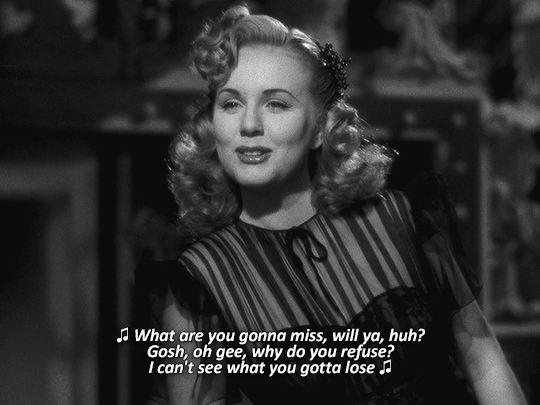
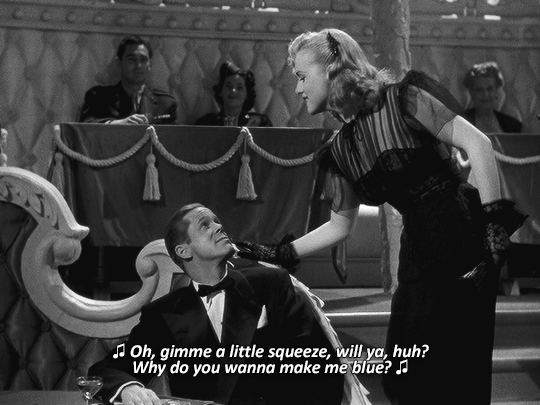
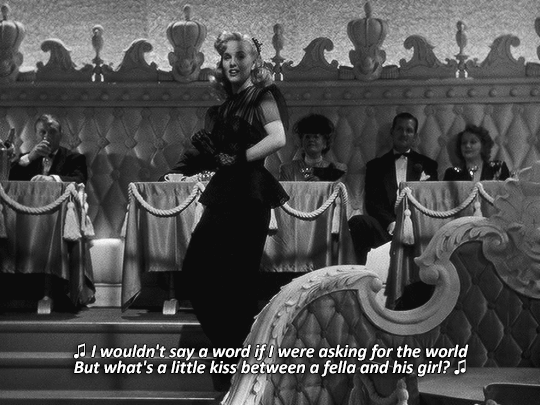
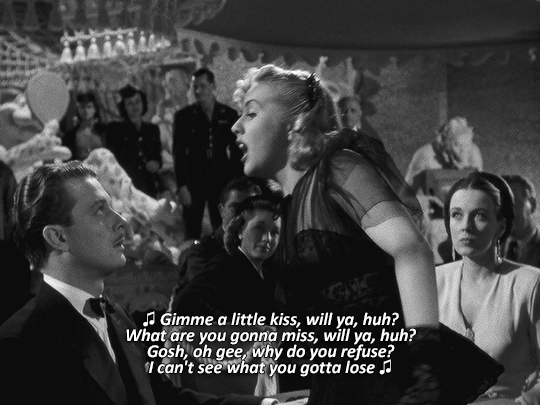
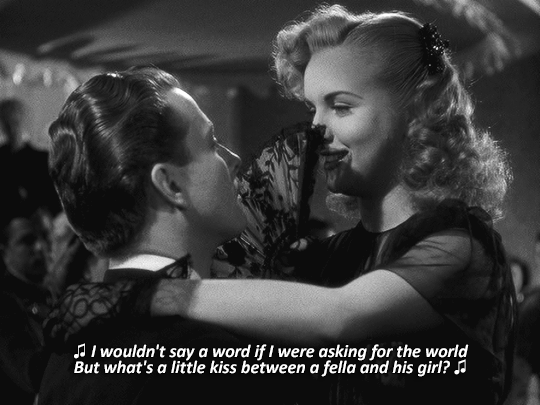


LADY ON A TRAIN (1945) musical numbers »
“Give Me a Little Kiss”
#oldhollywoodedit#classicfilmedit#Deanna Durbin#Lady on a Train#category: Lady on a Train#person: Deanna Durbin#person: David Bruce#*mygifs#*loatedit
398 notes
·
View notes
Photo
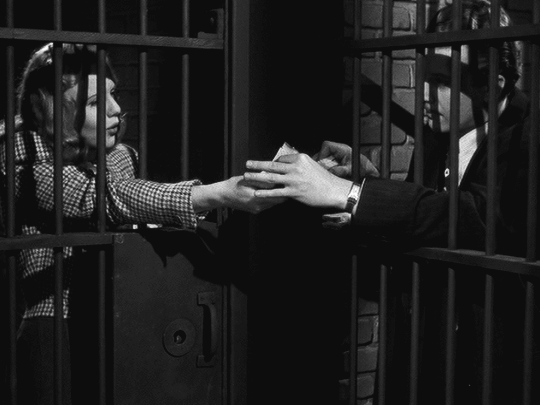


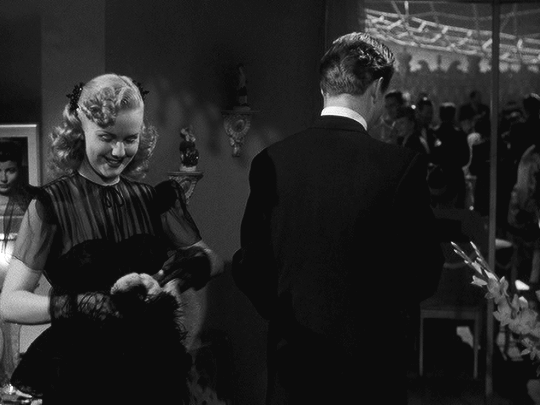
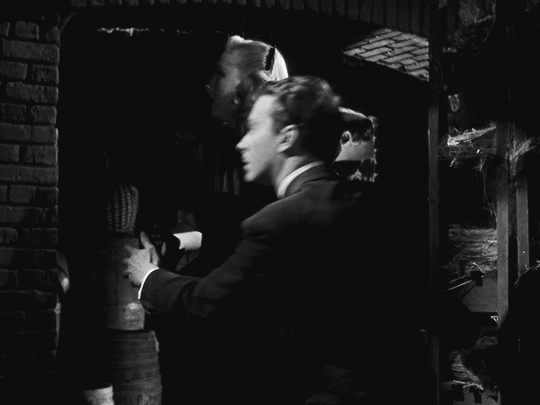

DEANNA DURBIN & DAVID BRUCE
as Nikki Collins & Wayne Morgan in
LADY ON A TRAIN (1945) dir. Charles David
#oldhollywoodedit#classicfilmedit#Deanna Durbin#David Bruce#Lady on a Train#category: Lady on a Train#person: Deanna Durbin#person: David Bruce#*mygifs#*loatedit
321 notes
·
View notes
Photo
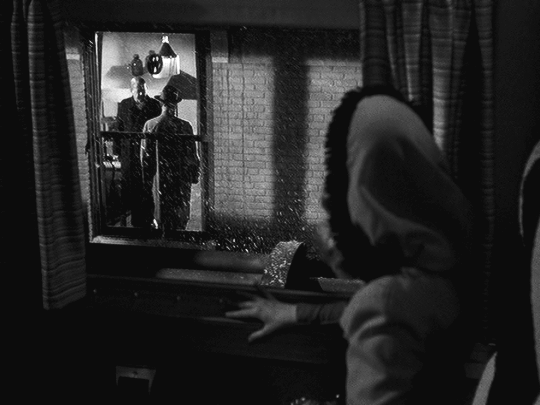
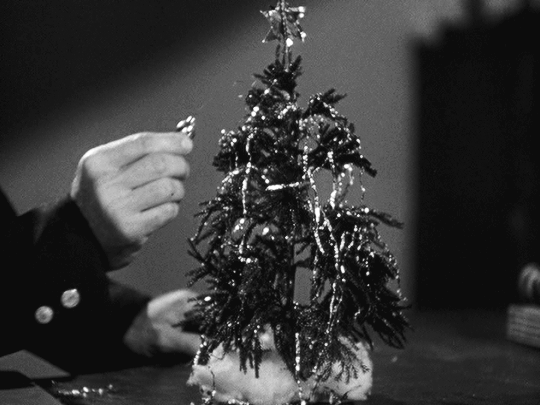

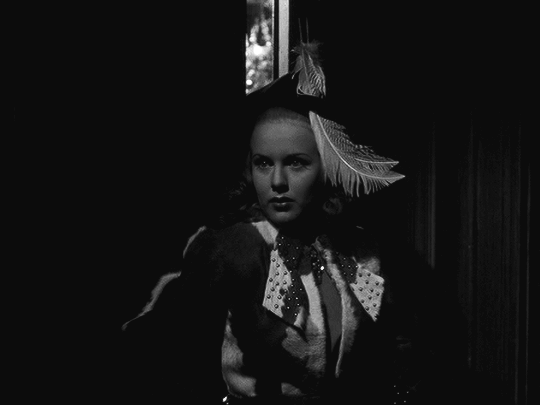
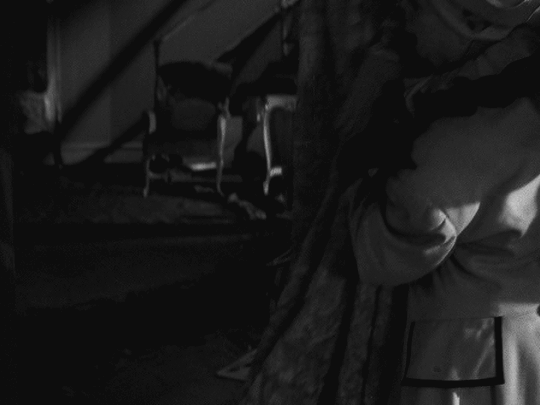

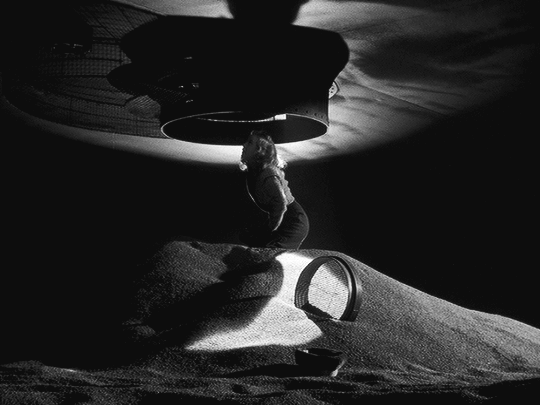
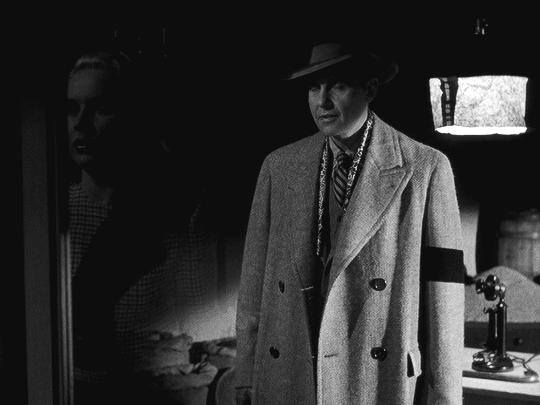
"My compliments to the old gentleman, you're not quite what I expected. My uncle had very bad taste. You're good taste."
LADY ON A TRAIN (1945) dir. Charles David
#oldhollywoodedit#classicfilmedit#Deanna Durbin#Ralph Bellamy#Dan Duryea#Lady on a Train#category: Lady on a Train#person: Deanna Durbin#*mygifs#*loatedit#it's a comedy noir tonal whiplash does not get better than this#i am not kidding this is a recommendation#the dop for this also did The Killers and Phantom Lady#AND it's a christmas movie#dare i say poetic cinema
340 notes
·
View notes